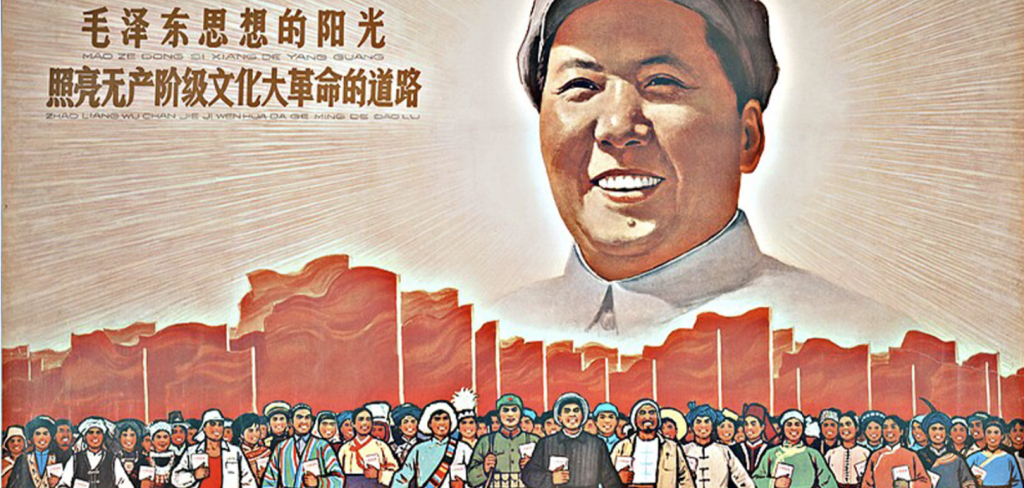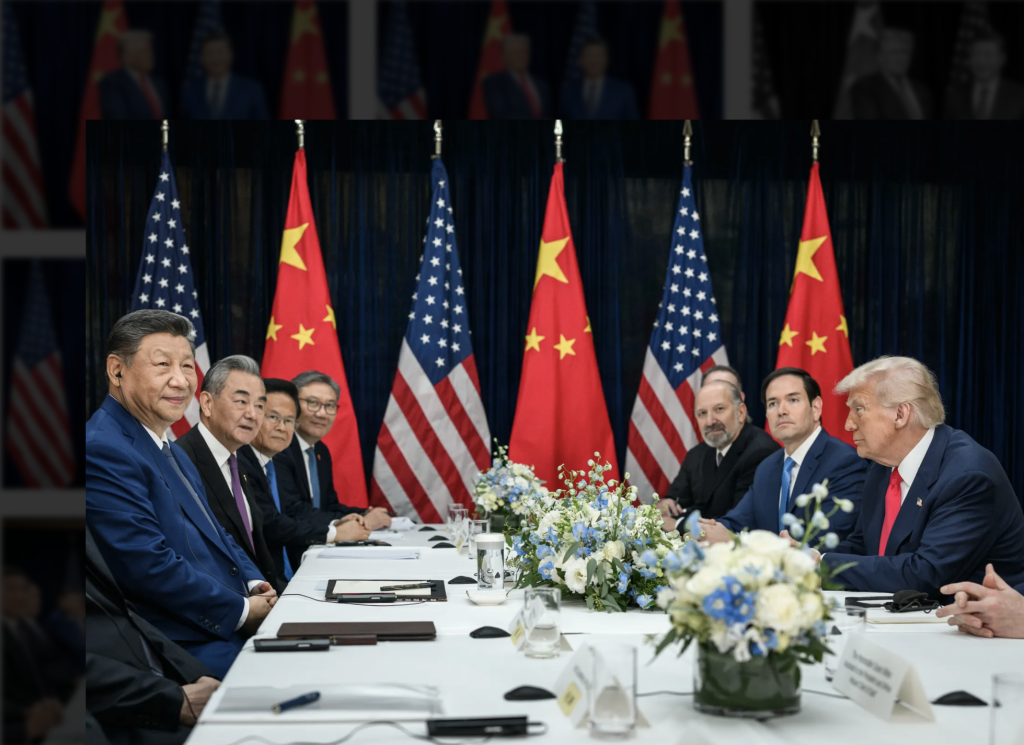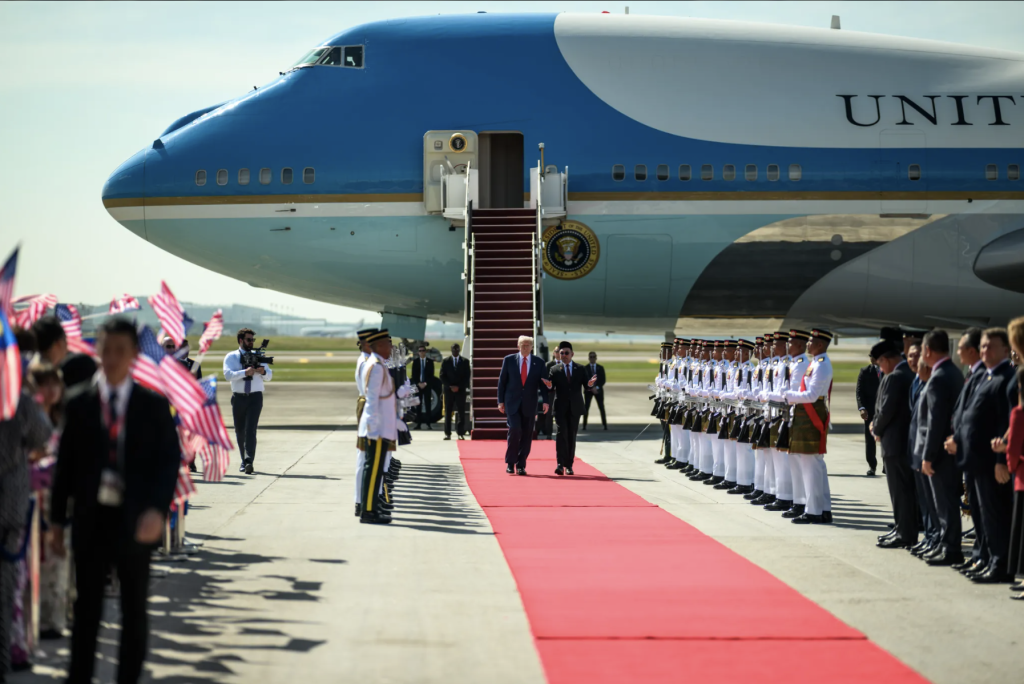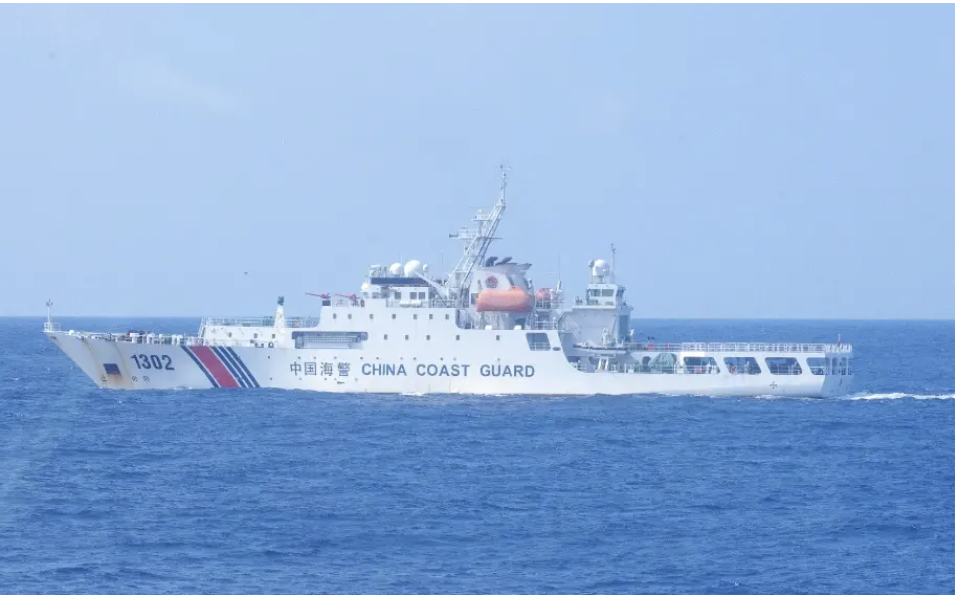Wargaming Taiwan
- Analysis
 Samuel M. Seitz
Samuel M. Seitz  Elliot Ji
Elliot Ji- 09/21/2022
- 0
Samuel Seitz is a doctoral student in international relations at the University of Oxford and an adjunct researcher at the nonprofit, nonpartisan RAND Corporation. You can subscribe to his blog here.
Elliot Ji is a doctoral candidate in politics at Princeton University, and a 2021 Paul & Daisy Soros Fellow for New Americans. He holds a Master of Global Affairs from Schwarzman College at Tsinghua University.
Recent wargames by the Center for Strategic and International Studies (CSIS) and Center for a New American Security (CNAS) have captured the attention of the general public and China-watchers. Interest grew further as China began conducting large-scale military drills around Taiwan early in August in response to US House Speaker Nancy Pelosi’s visit to Taiwan. Although such attention is warranted, it has also resulted in a variety of misleading commentaries about wargames that confuse more than clarify.
While some of these commentaries are critiques in bad faith, it appears the vast majority simply misunderstand what wargames are, how they work, and why they are employed.
Wargaming is a particular method of studying strategic and operational problems, but the practice has inherent limitations. It is optimized to provide certain types of information to strategists and policymakers. Critically, wargames are not predictive models.
In fact, much of the value of wargames derives from the process of playing the game rather than the particular outcome they produce. Since wargaming continues to be a niche methodological approach, it is of little surprise that many non-specialists continue to misconstrue the recent CSIS and CNAS games. This article attempts to cut through the confusion by providing a general introduction to wargaming as well as a basic overview of the most salient assumptions and findings of CSIS’ and CNAS’ games.
What are Wargames and What are They Good For?

Terms such as wargames, maneuvers, exercises, and simulations are often used interchangeably in popular discourse, but they are not synonyms. A wargame, according to the official Department of Defense definition, is a “representation of conflict or competition in a synthetic environment, in which people make decisions and respond to the consequences of those decisions.” The key feature of wargames is their ability to closely examine competitive decision-making between human competitors.
As Erik Lin-Greenberg, Reid B.C. Pauly, and Jacquelyn G. Schenider point out, wargames help experts understand leader decision-making for four reasons. First, they are more immersive than alternative approaches, making the experience feel less artificial. Second, they can feature participants who better resemble the population of individuals likely to be involved in strategic decision-making. Third, they better model real-world decision-making by generating interactions among and between teams of people. Finally, they enhance realism by making players responsible for the consequences of their decisions.
The uniquely immersive and competitive nature of wargames also mitigates many of the issues found in more traditional survey and combat modeling methods. For example, survey respondents bear no consequences for their answers and often possess little incentive to offer high quality responses. This introduces biases, which can range from respondents offering non-serious answers to respondents answering in ways they think the researcher wants.
In some respects, wargames are similarly artificial, but they better simulate real stakes and genuine competitive pressures—much like a particularly immersive video game or chess match—that increase the quality of responses and mitigate issues with traditional survey methods. Since analogue wargames leave so many decisions around strategy and force employment up to the players, they tend to enjoy greater flexibility compared to computer-based combat simulations.
They also allow greater focus on decisions of force employment and strategy compared to simulations, which treat “command-control processes, tactics, and strategy in terms of stereotypes embedded in the data bases.” Tabletop games, due to their relative simplicity, can also be iterated more easily, and the adjudication, while sometimes more simplistic, is far more transparent. By contrast, many computer simulations suffer from the black box problem, where combat modeling is hidden behind opaque code that is difficult for participants to understand.
This is the real strength of wargaming as a technique – it allows analysts to observe how real people grapple with realistic strategic problems. Watching teams talk through these problems and respond in real-time is immensely valuable, because it reveals the motives behind their actions and the trade-offs participants consider while devising their approach.
For researchers, observing the decision-making process can also reveal potential blindspots in current thinking or validate certain operational concepts. Good games often incorporate subject matter experts who have a deep knowledge of, for example, Chinese military doctrine, but it can sometimes be just as valuable to observe how more generalist participants tackle the problem, as they bring fewer (or at least different) assumptions to their strategic approaches. Usually these novices pursue unrealistic strategies and experience catastrophic failure, but occasionally they innovate novel concepts that allow analysts to stress-test their own assumptions and generate new ideas.
Wargames enjoy additional advantages as well. For one, they are highly flexible and can be customized to emphasize different aspects of a problem. For example, some wargames offer participants a limited menu of possible options from which to choose, which can help policymakers think through the second- and third-order consequences of likely responses without getting overwhelmed in minutia. Other games are much more free-flowing, providing an excellent environment for subject-matter experts to test and validate new concepts while confronting quotidian issues related to campaign management, such as ensuring sufficient logistical capacity. Designers’ ability to iterate games also means one can tweak initial conditions or campaign parameters to ensure that findings are robust to certain assumptions being changed.
Again, the aim is not to predict the outcome of a campaign or war, nor is it even to understand the probability of victory. Rather, the goal is to generate ideas and concepts and evaluate how, on the margin, changes in behavior might affect key outcomes. Jeremy Sepinsky and Sebastian J. Bae put it best when they write that “games strive to explore and distill the fundamental nature of the problem itself—which rarely leads to definitive scenarios or solutions.”
The Limits of Wargaming
Despite the significant value offered by wargames, there are several notable shortcomings. Perhaps the most obvious is that wargames are synthetic. While the immersive and often detailed nature of wargaming is likely to produce more realistic behavior, the experience is still artificial. Consequently, results produced by games may fail to effectively capture real-world behavior. This problem is difficult to resolve, because the ersatz nature of wargaming is fundamental to the method, so simply re-running the game does little to mitigate biases generated by the “gamification” of the problem.
Our personal experience in wargames, for example, is that the use of nuclear weapons is more common than we might expect in the real world. In a game-setting, this is likely because the decision to employ nukes lacks the stakes that such a real-world decision would entail.
Next, games are limited by the assumptions that underpin them. The year in which a scenario takes place, the weapons systems that are available, or the assumptions around allied basing rights can significantly shape the development and outcome of a game. While this is less of a problem for games seeking to identify general lessons applicable across a range of potential scenarios, it does limit the degree to which games are able to speak to particular contingencies. Critically, those engaged in serious wargaming are transparent about what these assumptions are and their implications for decision-making.
Of course, this should not be much of a problem as long as one remembers that games are not predictive tools. The issue, however, is that games must be at least somewhat reflective of likely futures to be valuable. The more divorced the scenario is from reality, the fewer useful lessons can be derived. The trick, therefore, is creating a plausible scenario while remembering that it is only one possible future. While easy in principle, this can be challenging in practice by virtue of the very same immersive nature that can make games so valuable for generating high-quality data. Players and observers might become so viscerally invested in a particular game that they start to assume that the illustrative scenario they just worked through is the most likely scenario confronting them.
These are all serious concerns, but of course they are concerns that implicate a wide variety of analytical methods. And the simple reality that wargaming requires these kinds of abstractions and assumptions is not an indictment of the method. For one, all forms of defense modeling require simplifying assumptions, whether that be the use of Lanchester equations to predict attrition rates or the donning of sensor-studded vests that detect electronic ‘hits’ to certain parts of the body during field exercises. All these techniques can generate erroneous outcomes because they do not perfectly replicate real-world combat, but they still offer useful and actionable insights.
Importantly, this problem is not unique to the realm of defense. Other social scientific methods require that certain assumptions be met and are prone to producing biased findings if they are not. Ultimately the key is to be transparent about the assumptions underpinning the game and to vary the relevant parameters across games to ensure robustness.
CSIS and CNAS’ Recent Wargames: A Closer Look
The CSIS wargaming exercise envisioned a China-Taiwan conflict breaking out in 2026 in which the US militarily intervenes. The most recent wargame, the 17th of the 22-game series, began with several key assumptions that set the conditions under which the belligerents fight to take or protect Taiwan.
For this game, all countries involved in the conflict could only utilize military resources publicly available as of 2022. Both the US and China are currently developing and testing a wide array of weapons technologies, such as a stealthy strategic bomber and hypersonic capabilities, but the wargame did not presume that they will be operational by the time the simulated conflict erupts.The game also assumed that the US would be able to use bases in Japan and conduct joint operations with the Japanese Self-Defense Forces. Furthermore, it assumed that the People’s Liberation Army (PLA) would commit the entirety of its available amphibious, naval, air, and rocket forces, and would focus operations on executing a successful landing, a difficult task assuming American and Japanese intervention. As perhaps the greatest reflection of the types of assumptions these games employ to test different elements of decision-making, the nuclear option was also assumed away entirely for both the US and China.
The game occurred over several rounds that, collectively, simulated a month-long conflict. While the calculations are still ongoing, the result suggests that China would still face several notable challenges were it to attempt a total takeover. The PLA likely has the requisite forces to achieve some level of sea and air superiority and would likely be able to land a sizeable number of troops on the island. However, the game scenario also revealed the logistical challenges that will confront the PLA were it to attempt a full-scale invasion. The game highlighted the hurdles confronting American decision makers as well, particularly given China’s home-field advantage.
As one of the game participants noted in a Twitter thread, the key for the American side is to initially play to avoid defeat rather than to seek to win outright. American players in games like this often tend to start too aggressively and lose their force in the opening rounds. Overcoming this offensive bias is an important lesson for American policymakers were they ever to deal with a scenario such as this.
In May, the NBC-televised CNAS game offered a shorter, three-round game with slightly different assumptions. Also conducted by leading experts, this game was set in 2027. The calculations were still done using publicly known information regarding Chinese and US assets, but there were slight differences with the CSIS game. The CNAS game considers the capabilities China will likely have by the conflict time set by the game, allowing China more advanced capabilities such as the H-20 stealth bomber by 2027. Furthermore, nuclear options were not off the table for either side.
The CNAS game also explicitly sought to highlight the broader political implications of a conflict rather than to simply assess the tactical and operational considerations in the theater. It highlighted, for example, China’s dilemma that the most militarily advantageous option (i.e., to preemptively attack American forces in the Pacific) is the least desirable political outcome, as it would guarantee war with the US. The China experts on the team eventually decided that Beijing’s confidence in its military and the political imperative to avoid a failed invasion will drive Beijing to favor a preemptive strike option and a targeted attack against Taipei’s leadership.
In the first round of the game, the China team moved to preemptively hit the US forward-deployed forces in Japan and Guam and landed a stunningly successful first strike on Taiwan. This immediately brought both the US and Japan into the conflict, resulting in a fierce air battle. China then escalated by launching cruise and hypersonic missiles against command and control centers in Hawaii, while the US and Japan prioritized the destruction of Chinese surface combatants defending the invasion fleet. During the last round, China reinforced its troops on the island and escalated further by attacking US military assets in Alaska, Hawaii, and San Diego with a nuclear test off the American west coast. At this point, the US had begun to push in its naval assets and started to move ground forces to the island to counter the PLA forces. Nuclear options were seriously considered, but the American side did not launch a nuclear weapon in the game.
The CNAS wargame offered a similar outlook to that of the CSIS game. It highlighted elements that suggest that the war will be a protracted one and reinforced the challenges Chinese leadership will face in attempting a total takeover of the island. Another important implication of the game are the fraught political questions confronting both sides regarding nuclear escalation. In particular, it raises questions about how both sides might work to reclaim the initiative if their efforts immediately around Taiwan begin to fail. While the game should not be viewed as a prediction, it does warn policymakers how battlefield failures may lead one or both sides to consider horizontal escalation and even nuclear use.
Interpreting CSIS’ and CNAS’ Findings
Both the CNAS and CSIS games were run by seasoned political scientists and former military officials. In terms of the technical parameters and adjudication of outcomes, these games are hard to beat without the introduction of classified information. That said, there are important limitations to the games that are worth bearing in mind. Perhaps most important is the lack of detailed information currently available. The CSIS game is still ongoing, for example, and thus it is too soon to offer detailed commentary because the full set of results is not available. This is a problem that will soon be rectified as final results are published, but it does mean much of the current commentary and reporting is incomplete due to its inability to examine the exact parameters and assumptions underlying the different iterations of the game.
Relatedly, the games are limited by their underlying scenarios. The CSIS wargame appears to be geographically limited to the Western Pacific, for instance, meaning that it may offer relatively fewer insights regarding the risks of horizontal escalation. More broadly, observers should remember that these are not predictions. While much of the reporting emphasizes statistics such as the loss of twenty American warships, this suggests a false level of precision. The war games are illustrative, not predictive, and thus the real focus should be on the more general lessons offered rather than the specific point estimates around losses.
Finally and relatedly, rather than criticizing whether certain weapons could indeed destroy certain targets, observers are better off considering the broader strategic assumptions that underpinned the thinking of each ‘Red Team’ and ‘Blue Team’ in these games. Put differently, these games necessarily assume a war will occur over Taiwan as part of its scenario-building, but this is only a hypothetical scenario. While the games offer valuable lessons about how a conflict over Taiwan might develop, they should not be interpreted as evidence that a war will occur.
This latter point is particularly important to remember when one is trying to be a smart consumer of wargames. They are one tool of many, and thus for best results should be combined with other analytical methods. For example, it is important to consider China’s underlying political objective. What is China’s theory of victory regarding Taiwan? The obvious answer is a full-scale invasion with overwhelming military force that attempts to raise the PRC flag in Taipei. While this is the most intuitive answer, it may not be the only one, especially considering that the value of re-unification must be balanced against the risk that a failed invasion could endanger regime survival. China would certainly want to eliminate the Taiwanese government, but a political capitulation may be equally if not more desirable to war (recall Sun Tzu’s teaching that ‘supreme excellence consists in breaking the enemy’s resistance without fighting’).
Kinetic attacks on key Taiwanese military and civilian targets, cyber and information operations, and a blockade could all induce a political capitulation from Taiwan, constituting a form of Chinese victory without a direct confrontation with the US and Japan. At the very least, by incrementally applying pressure on the political core of Taiwan without firing a shot at the US, China gains multiple opportunities to ‘declare victory’ domestically should it face any challenges either at home or abroad. Analyses like this illustrate a shortcoming of wargames. They can elucidate some of the salient tradeoffs confronting Beijing—strike the US at the outset to gain a tactical advantage or limit strikes to Taiwan with the hope that the US and Japan stay out—but determining exactly how China will behave requires not just an understanding of the military considerations but also of domestic constraints, strategic culture, and many other factors impossible to fully model in any one game.
This has several implications. For one, analysts and interested observers should avoid evaluating these games in a vacuum. There are many other resources for understanding the risks of a Taiwan conflict, and the best results occur when one combines insights from games with other forms of analysis. These include net-assessments on the military balance, academic articles on the broader strategic situation in the Western Pacific, detailed analysis of the constituent elements of a likely Chinese invasion force, and the broader regional political environment.
With all that said, these wargames can still offer value in and of themselves. On one hand, they are immensely useful for participants who learn while playing. On the other, well-publicized wargames can help shape domestic expectations and highlight salient strategic considerations for the public while anchoring scholarly and legislative debates. They can also offer particularly effective support to Track 1.5 dialogues by providing experts from both sides a common scenario around which to orient discussion.
Relatedly, these wargames help reveal some of the American assumptions regarding war over Taiwan and thus elucidate how American policymakers and defense analysts conceptualize the problem. Wargames like those run by CSIS and CNAS make real defense issues visceral and legible for non-experts. Ret. Lt. Gen. Hooper commented at a recent Carnegie event that a multi-point landing is extremely difficult to accomplish – the last time it was executed successfully was on September 15, 1950 by the US military in Incheon. However, it is one thing to hear this and another to see it play out on NBC.
For all their shortcomings, wargames still provide a variety of unique and valuable benefits both to policymakers and the general public. If experts and policy makers in China are following these games, it could help them appreciate how much the Americans are actively thinking about and preparing for the conflict, perhaps serving to dissuade them from risking a large-scale military engagement.







